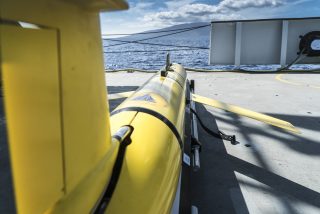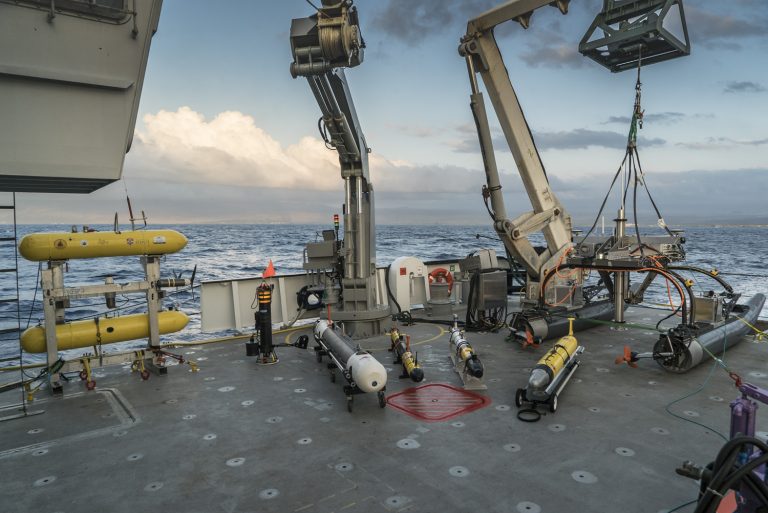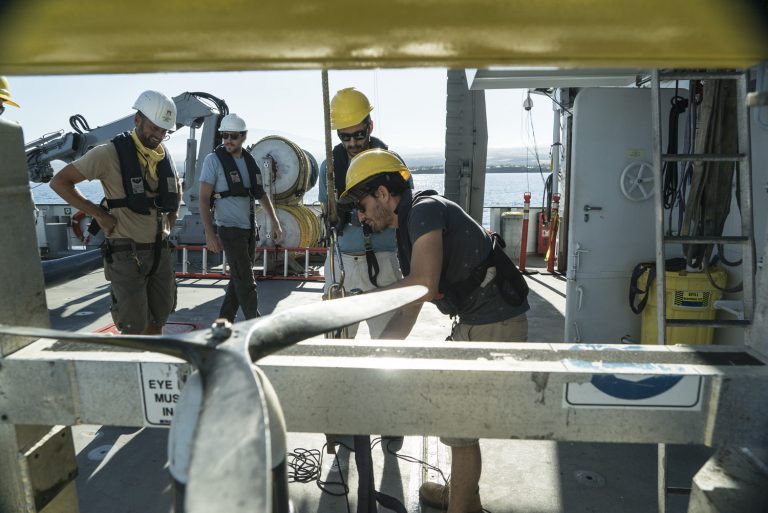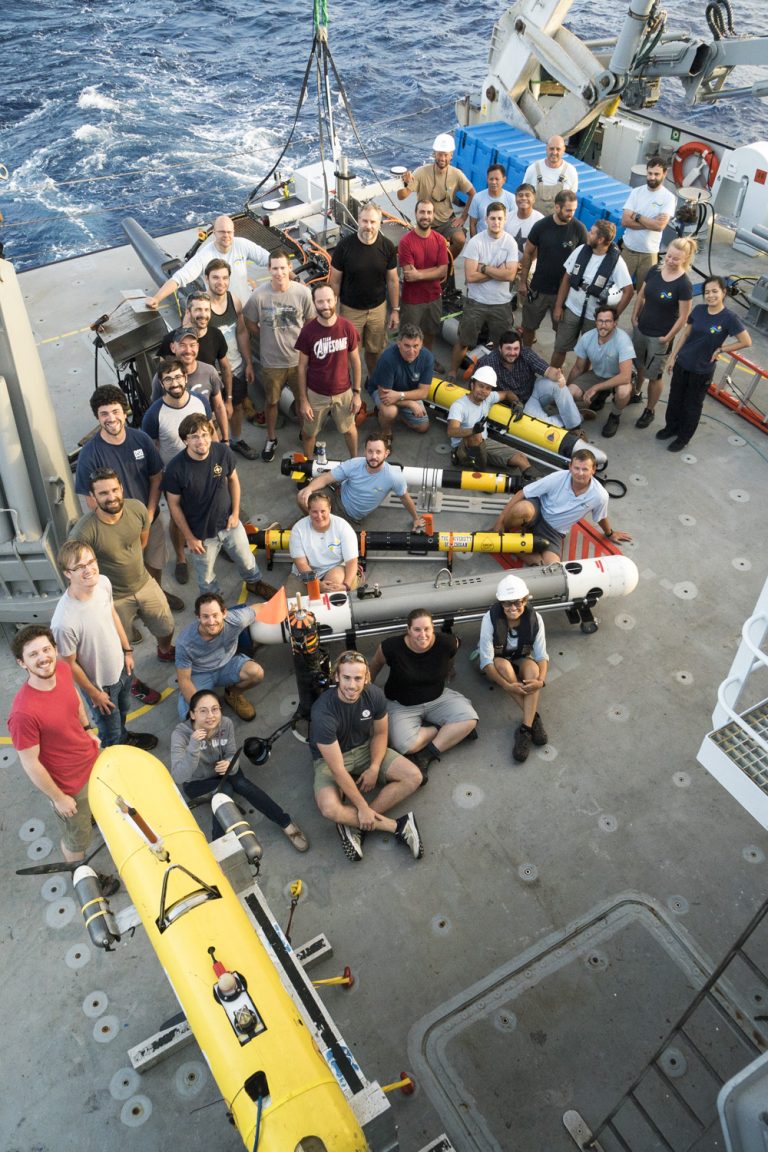The famous physicist Edward Teller said, “The science of today is the technology of the future.” The experts who took part on the Coordinated Robotics expedition came to the ‘Au ‘Au Channel to imprint their own take on his statement. They want to advance technology so it can deliver the science of tomorrow.

“We are making an engineering development effort. We are testing and demonstrating several technologies related to Autonomous Underwater Vehicles, pushing the boundaries about what these platforms can do, in ways that require less human intervention. Also in ways which they act ‘smarter’ in terms of collecting oceanographic data and adapting to the environment and situations that may arise,” explains Dr. Oscar Pizarro, Chief Scientist.
Traditionally, utilizing AUVs requires a lot of human control and input. While that has several advantages – such as knowing what the vehicle is planned to do next – disadvantages also exist. Primarily the concern with communications underwater is that human interaction and feedback can be slow or inconsistent. The team of engineers is striving to create a comprehensive technological platform that will enable us to study the oceans by designing missions and sending a battery of robots to complete them, while being monitored by other robots and coordinated by customized software.

Sea Trials
Dr. Pizarro’s goal is to allow people to capitalize on their creative abilities, manifesting in areas such as data interpretation or generating hypothesis. The bookkeeping part of research is best left to machines: “The challenge is trying to do as much as we can to help people make sensible decisions. This cruise was an opportunity to try techniques that are more automatic in generating plans of what to do, when to do it, adapt to changes in conditions, to failures, suggesting alternatives. If necessary, having a dialogue with the human operators.”

Over the course of the last three weeks, several different robots were deployed constantly, pushing their autonomy and capacities. Some of the robots have plenty of sea-time under their belts, while others had much less experience. All of them were in the process of being improved while being integrated into a system that enabled them to work together, at the same time maintaining energy-efficiency and yielding trustworthy data. The resulting statistics show a clear picture: the glider alone, for instance, operated for over three days while acquiring data and navigating at the same pace of an average human walk, and only consumed 1 kilowatt total (The equivalent of spending 10 to 20 cents on electricity).
Some other impressive stats from the expedition:
• Iver AUV
Images taken – 240,000
Bottom time – 24 hours
Ground covered – 10,1622 meters
Ground surveyed – 36,025 meters
Area imaged – 77,453 m2
• Lagrangian Float
Bottom time – 65 hours
Ground covered – 33km
Images taken – 72,267
Deployments – 55
Depth range – 23-85 meters
• AUV Sirius
Data – 1 TB
Dives – 9
Ground covered – 101,622 meters
Images taken – 36179
Bottom time – 33.5 hours
Ground covered – 60.3 km
• Slocum Glider
Ground covered – 120km
Max depth – 300 meters
Bottom time – 90 hours
Data – 30GB
The Return
Falkor is back in Honolulu, and the robots are back in their cases, prepared for the long trip back home. The researchers are leaving with all the experience and exchanges they were able to share on board, as well as results from experiments taking technology a step further at the service of science. “All these techniques that we’re developing and demonstrating, they will help build our ability to understand and study the oceans,” says Dr. Pizarro. “Having more observations is critical to have good science. If the observations are done in ways that are cheaper and that don’t require so many experts and manpower on the field, we will have a more comprehensive view of what is happening – how things are changing in the oceans. Hopefully, that will empower us to make wiser decisions and policies in the future.”


